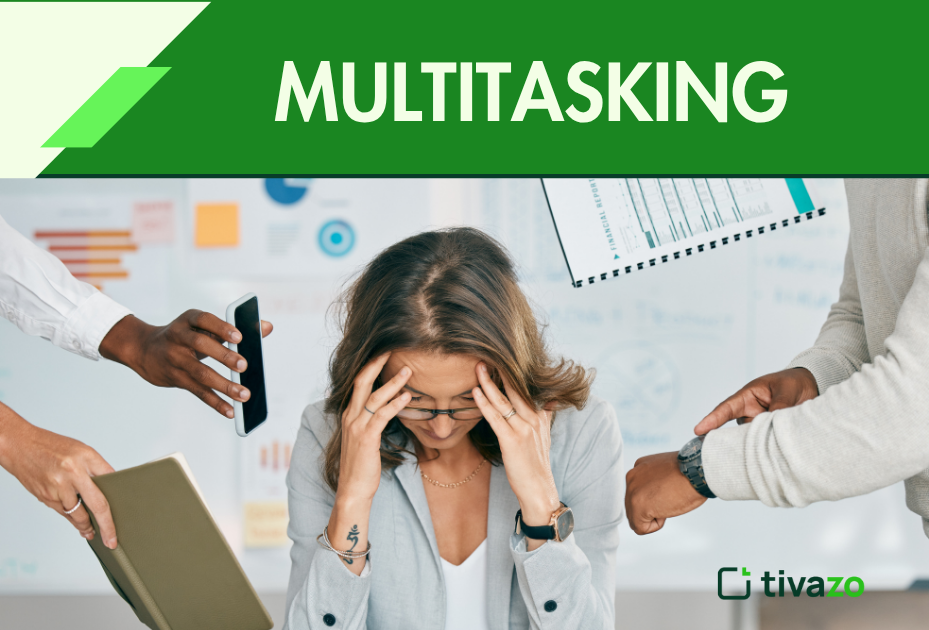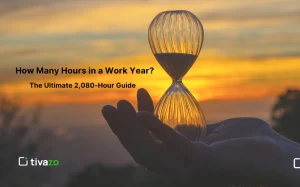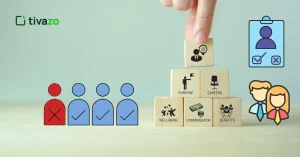Nowadays, multitasking is linked to being busy, effective, and current in the world of work. Many times, we work on documents, check emails, go on social networks, or make presentations all at the same time. Multitasking may not be as helpful as it seems, so what is it, and why could it affect our productivity and emotional state?
We will look into the science behind multitasking, its advantages and disadvantages, tips for doing it well, and myths about it in this wide-ranging guide, helping you know when and how to use it effectively
What Is Multitasking?
The act of performing more than one thing at the same time is known as multitasking. It could include carrying out actions like cooking while listening to a podcast, or it could be reading a document as you answer messages. It’s common to think that multitasking saves time, but actually, it tends to make people less productive, causes more stress, and leads to more errors, especially when performing something complex. If it seems helpful to multitask, science uncovers clearer information about its results.
The Psychology Behind Multitasking
Working on complex matters at the same time. Multitasking is, in reality, a way of quickly focusing on different jobs in a short time period.
Cognitive Load and Attention
Multitasking causes more mental effort than when we focus on a single task at a time. Changing tasks frequently makes it necessary for our brain to adjust, and this may result in attention residue, affecting how appropriate our response is.
Executive Functions and the Prefrontal Cortex
The part of the brain that handles decision-making and complex thought is the prefrontal cortex, and this area is needed for multitasking. Nevertheless, it can only concentrate on one major mental task at a moment. Multitasking a lot often causes mistakes, leaves out important points, and slows down what you do.
Types of Multitasking
Understanding the different types of multitasking can help you identify which combinations of tasks are manageable and which should be avoided.
1. Concurrent Multitasking
Doing two jobs at the same time is known as concurrent multitasking. This approach can only help if at least one of the activities is quite easy for your brain to carry out. Yet, though it is hard to think deeply and do something manual at the same time, you can try simple mental and physical activities together.
Examples:
- Folding clothes when talking on the phone
- Listening to a podcast when moving from one place to another
- Preparing your favorite meal while having a conversation
When to use: If you can do a task easily and without much thinking, then it’s acceptable.
Risk: This approach creates a risk because performing two thinking tasks makes it harder to do well in each.
2. Sequential Multitasking
Sequential multitasking requires you to switch fast between writing a report, checking your email, messaging, and going back to work on the report. Although moving from one thing to another can help you feel productive, your mind loses strength and efficiency.
Examples:
- Handling discussions in Slack as you are handling a document
- While studying, do not forget to look at your notifications.
- Moving from one spreadsheet to another, from one tab to another, and from one email to another
Why is it common: People do it since it moves the process forward, though it can lead to extra time taken
Risk: Remaining thoughts from before are enough to distract you from the task you have now
3. Reactive Multitasking
When phone calls, notifications, or people interrupt, you are required to switch what you are doing, which is reactive multitasking. In this type, the stress comes from the fact that you have no control over your working process. It interrupts your focus and adds more time for you to focus again.
Examples:
- Having a phone call during the middle of my writing
- The presence of endless notifications over work
- Getting interrupted by others in your workplace
Why it is harmful: It scatters our focus and makes concentrating very hard
Risk: The main risk is mental strain, more chances of errors, and less production.
The Pros of Multitasking

Many people criticize multitasking, yet it can help if done purposely in appropriate contexts. These are the five main benefits:
1. Time Efficiency for Simple Tasks
Multitasking helps people increase their productivity by blending simple tasks together. For instance, you may handle your laundry while listening or prepare some food at the same time as talking on the phone. Managing time this way often still allows you to complete all the tasks without lowering their quality.
2. Increased Flexibility in Fast-Paced Environments
Those in emergency services, journalism, or customer support need to easily manage various things at the same time. Being able to handle many tasks at the same time allows some people to respond faster and better to new priorities.
3. Enhanced Learning Through Sensory Pairing
Some people, mainly those who learn by hearing, may find that working out while hearing audio lessons, lectures, or stories helps them remember things better and keep their attention. This approach works better when students apply it on purpose.
4. Improved Task Overlap in Routine Work
When you do the same kinds of work every day, multitasking may save time. In this case, a remote worker could handle normal data as they join a meeting that does not require much participation. This way, you can continue with both jobs with only a little attention on either.
5. Better Preparedness for Multichannel Workflows
Since we are in the digital age, people in many jobs need to use different online tools, ways to communicate, or platforms together (email, chat, CRM, social media). Performing more than one task at a time makes people skilled at using technology, increasing their response time.
The Cons of Multitasking

While managing various things can be useful at times, it usually makes us less productive when we need to focus on important activities. Five of the biggest issues are described below.
1. Reduced Productivity
Multitasking, researchers say, can decrease a person’s productivity by as much as 40%. The frequent changes in thought for different tasks contribute to slow performance and reduce your ability to finish on time.
2. Increased Error Rate
When you try to focus on several tasks at the same time, the chance of mistakes goes up. Under pressure, having to handle multiple tasks at once can lead to big mistakes in important sectors such as healthcare, aviation, or engineering.
3. Mental Fatigue and Burnout
Frequent changing of tasks puts too much pressure on the brain. Such a situation can cause employees to face stress, poor judgment, and ultimately may lead to burnout, especially in work environments where things happen at a rapid pace.
4. Impaired Memory and Focus
When we try to do many activities at once, our working memory is negatively affected. Therefore, people usually forget what they were working on and may miss important details.
5. Reduced Quality of Work
When dealing with many tasks, focus on each task becomes less. This usually results in completing jobs right away, but without much creativity, detail, or correctness, as in a single-task situation
Multitasking in the Digital Age
1. Digital Distractions and Information Overload
On average, people look at their phone 96 times every day, almost every 10 to 12 minutes. All these constant digital updates are why we struggle to concentrate and to do really important tasks well.
- Why it matters:
Being interrupted multiple times means it is hard to concentrate on challenging work. Each time we look at a screen, our brain takes a little while to focus properly, causing what is known as “switching cost.”
- Result:
Working on many different tasks at once on multiple devices often results in our productivity decreasing, our stress level rising, and our creativity faltering.
2. Social Media and the Attention Economy
Social media outlets are created to catch our attention. Tools such as continuous scrolling, push notices, and custom feeds are made to attract users to social media and keep them using several apps. As a result, people end up spending their focus on many things at once instead of concentrating on one thing.
- The cognitive cost:
Moving from Instagram to TikTok to YouTube to checking emails reduces the strength of our attention and also makes us more tired. With so much stimulation, people don’t have much time for boredom or thinking, which are important for thinking and creativity.
- Work-life blur:
Getting notifications on your phone at any time, whether at work or not, prevents you from staying focused. Mixing work and personal life brings about a fall in job happiness and time at leisure.
Multitasking in the Workplace
1. Open Offices and Multitasking Culture
In today’s offices, both the environment and available software are created to encourage people to always interact. While they are supposed to boost teamwork and speed, such systems regularly result in breaks in workflows and heavy interruptions.
- Reality check:
In open offices, employees are more likely to be influenced by noises, passing talks, and digital distractions around them. It is tough to get long hours for detailed concentration because there are always distractions.
- Result:
Dealing with emails, meetings, notifications, and tasks at the same time usually makes people feel busy, but in reality, it reduces real progress.
2. The Myth of the “Productive Multitasker”
Many people in the corporate world believe that being busy by switching between tasks, answering right away, and joining numerous communications is the same as being productive. This, in fact, leads to doing a lot without accomplishing much and lowers the quality of the work.
- What research shows:
Studies keep showing that focusing on one task at a time helps people achieve better results, work more accurately, and improve their imagination. On the contrary, performing more tasks at once takes more time and increases the chances you’ll make mistakes.
- Why it persists:
Responding quickly to requests is usually seen as more important than what is accomplished. This causes people in the organization to worry about how fast they can complete jobs rather than the quality of work.
How to Multitask Effectively

Since multitasking isn’t always out of reach, you can control it in a planned way.
1. Pair Tasks Wisely
Do something light while you are walking and something more demanding when you listen to a podcast, but never do high cognitive tasks at the same time.
2. Make use of the 80/20 Rule.
With the Pareto Principle, try to discover the top 20% of tasks that give you 80% of the results. Make sure you deal with the main tasks in your day one after the other, and use multitasking for only minor or regular duties.
3. Time Blocking
Make it a habit to divide your time for focused work, taking care of paperwork, and rest. It lowers the urge to do many things at the same time and boosts how effective you are.
4. Leverage Technology
You can achieve productivity by using Focus@Will, Forest, or Pomodoro timers. Turn off notifications that you do not need and save all less urgent communications to be sent at a later time.
5. Practice Mindfulness
Meditation, as well as other mindfulness activities, can boost your attention and enable your brain to cope with distractions. Just 10 minutes a day of mental exercises may improve the mind over the long run.
When to Avoid Multitasking
Although multitasking helps at times, it should not be used in specific situations to avoid problems with accuracy, the outcome, and our health. In certain places, it is necessary to focus your attention at a deeper level.
1. When Learning New Information
Multitasking can be very harmful to your ability to learn and remember something, no matter if you are studying, starting a new job, or picking up a new skill. For your brain to grasp and structure new things, you should pay full attention.
2. When Problem-Solving or Thinking Critically
Some jobs, including strategic planning, coding, writing, and design, are negatively affected if your focus is not on them. Doing several things at once lowers your chances of making strong connections in your thoughts.
3. When the Stakes Are High
Some actions, such as managing money, assessing medicine, or doing legal work, have serious consequences if even the smallest mistakes are made. Sometimes, people think that great attention to detail is not necessary. However, those who work here know that is not true.
4. When You’re Fatigued or Stressed
Tiredness in the mind only makes trying to perform multiple tasks at once more harmful. When you feel tired or low, changing your activities adds stress and increases the chances that you will make a mistake or react in a way you shouldn’t.
Under these conditions, working on one task at a time results in better work, clearer thoughts, and less chance of mistakes. Make sure to pay attention, as it is important when you need to be precise.
Multitasking and Remote Work
Unless people are separated between professional and personal duties, remote work tends to cause them to handle more than one task at a time. Remote employees usually handle jobs such as keeping track of their children’s activities and responding to work emails at the same time.
Strategies for Remote Workers:
- Set aside specific places for work and for getting some rest.
- Make clear boundaries for everyone living in the house.
- Begin with the urgent and important tasks by using a priority matrix.
- Every now and then, give your mind time to refresh.
Multitasking and Education
It is common for students to encounter problems with multitasking, mainly if they use their devices while studying. It is shown that splitting your attention while studying can make it harder to remember things and understand them by as much as half.
Tips for Students:
- Learn for about 25 to 30 minutes at a stretch and then rest.
- Do not allow notifications to disturb you when you are studying.
- Don’t listen to the background TV or music with words while reading.
- Organize your study plans on apps such as Notion or Todoist.
Scientific Research on Multitasking
Many studies provide insight about the effects of multitasking:
- Stanford University (2009) showed that heavy multitaskers were more ineffective in engaging tasks completed in memory and attention
- University of London identified multitaskers can temporarily lower IQ by 10 points
- MIT Media Lab proposed task-switching can reduce efficiency and raise error rates
Since we believe we are being more productive, we are actually less likely to be productive when multitasking.
Conclusion: Is Multitasking Worth It?
Multitasking is like a double-edged sword. It can be helpful in getting us through boring tasks more quickly, but if we over-rely on multitasking for work that is complex, we risk losing quality, building stress levels, and impairing the way we learn and remember.
The trick with multitasking is intentionality. Know when to multitask, when to focus, and be intentional with your span of attention, like it is a special treasure. The best professionals today are not the people doing as much at once. They are people doing the right things at the right time with their entire presence.
So, the next time you’re switching between five browser tabs, ask yourself, “Am I really being productive, or just busy?
Is multitasking good?
It helps with simple tasks but can hurt focus and increase errors in complex work.
What are multitasking skills?
Skills like time management, focus, and task switching that help handle multiple tasks efficiently.
How can I improve multitasking?
Group simple tasks, reduce distractions, use timers, and avoid multitasking during high-focus work.




